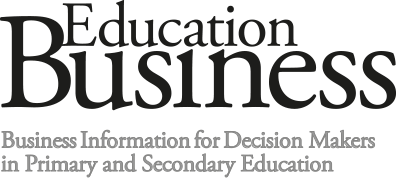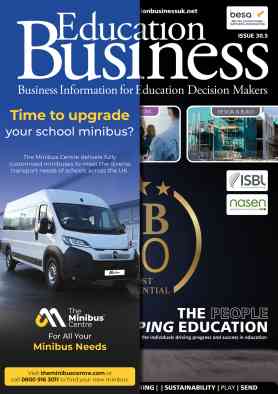Is a paper-free school a proposal too far?
 Many organisations are clogged up with too much paper. The advent of the internet was supposed to herald the dawn of a paper-free world, which blatantly hasn’t happened. Nowhere is this truer than in schools, where there remains an over-reliance on paper in many areas, from the actual teaching to the administration and running of a school.
Many organisations are clogged up with too much paper. The advent of the internet was supposed to herald the dawn of a paper-free world, which blatantly hasn’t happened. Nowhere is this truer than in schools, where there remains an over-reliance on paper in many areas, from the actual teaching to the administration and running of a school.
Of course, there are elements of school life that traditionalists would be appalled at the thought of going digital.
Many people cling to the idea of physical books and the idea of using a pen to write on paper. Yet it’s not hard to see a future without either. In 2011 the Korean government announced plans for education to be paper-free by 2015, making $2.4 billion available to buy a tablet for every student and digitising the entire curriculum. This didn’t quite succeed but the ambition was laudable and shows we are not as far away from paper‑free teaching in the UK as one might think.
Paper-free projects
But the idea of paper-free processes in a school is an attractive one. Those that work in education are aware how paper can clog things up and know removing it in some areas could improve efficiency and productivity immeasurably. As there are 24,000 schools in the UK, educating more than eight million pupils, there could be considerable cost savings too.
This was demonstrated in a recent AIIM study, Paper Wars 2014 – an update from the battlefield. We surveyed hundreds of organisations, including a number of educational establishments. Of those organisations that have introduced paper‑free projects, 60 per cent of respondents had seen return on investment (ROI) within 12 months, and more than three-quarters had done so within 18 months.
Furthermore, 68 per cent of respondents said that business-at-the-speed-of-paper will be ‘unacceptable in just a few years time’ and around half of organisations surveyed claimed that the biggest single productivity improvement would be to remove paper. But is it realistic to think that schools can ever go completely paper-free? Probably not, so perhaps we should all be looking at paper-free processes instead and how technology can make that possible.
Paper-free workplaces – an impossible dream
For a community of information professionals such as AIIM, admitting that we will almost certainly never be paper-free is hard to accept. But it is true – the recent AIIM research showed more than half of respondents still print personal paper copies to take to a meeting, or to add a signature. Anecdotally, I’ve heard of school meetings where long agendas and background materials are printed for attendees, with a majority of them simply unread and binned after the meeting.
Our research also highlighted that people still use printed copies for reading offline or out-of-the-office (50 per cent), and particularly to review and mark-up (45 per cent). Other reasons given for there still being so much paper in their business processes, included the (perceived) need for physical signatures (44 per cent) and a general lack of understanding of the paper-free options.
The need for physical signatures is an interesting area, whether that’s getting parental approval for a class trip or signing off an invoice. There are many different electronic signing solutions available ranging from stylus input, automated verification, digitally encrypted signatures, and web signatures, all of which have a place in achieving paper-free working. Stopping an otherwise all-electronic process simply to collect a physical signature on a piece of paper, which is often immediately re-scanned, is obviously somewhat sub-optimal and frequently presents a greater confidentiality risk than the electronic original itself.
In November, World Paper Free Day 2014 took place. It is an initiative that sought to show how much paper is wasted in the workplace and how well we can manage without it. Hundreds of organisations all over the world – including many schools in the US and UK – participated in going paper‑free for the day. One of the key takeaways was that paper-free processes are a much more realistic goal than going completely paper-free and there are a number of technologies, both specific to education and more general, that can play a role in this.
Point-of-entry scanning
Firstly, the concept of scanning all inbound mail at point-of‑entry and routing it around the school electronically is very attractive, especially if it can significantly reduce or even eliminate internal mail distribution. Our research asked those who consider they have a digital mailroom scenario, what proportion of mail they scan (not including brochures, junk mail, etc.). 45 per cent are scanning half or more of incoming mail, and 34 per cent are scanning three-quarters. Significantly, almost a quarter (23 per cent) are scanning 90 per cent or even 100 per cent.
Going mobile
Secondly, as the camera capabilities of mobile devices have improved, the concept of using them as a portable scanning device has taken off. In addition, tablets provide a new way to access electronic forms, creating what we might call a digital clipboard. Indeed, some of the applications are quickly becoming ubiquitous in education – holding pupil notes on a tablet, scanning receipts for expense claims, uploading content to back-end systems via a mobile.
Early years pupil assessments can now be carried out by taking video on the tablet or phone of the pupil, performing tasks or reading, and adding spoken notes from the teacher. It’s then all downloaded automatically and linked to the pupil record, which could be made accessible to parents in the future. There are many such possibilities with using mobile for paper-free processes, but the overriding benefit is speed, it makes everything far faster.
Paper-free assessment
Assessment and marking of exams and papers is a major time resource for many teachers. Paper-less assessment tools are recognised as the future of testing in schools, bringing accurate, secure and reliable methods of assessing progress to education. Teachers can choose from existing tests, devise their own or use a combination of the two. It allows them to identify trends in pupils’ results and gives great insight into strengths and weaknesses.
School ERP
There many providers of school Enterprise Resource Planning (ERP) software on the market. These are usually web-based applications and offer a range of modules to help reduce paper in schools. These will often include administrative areas such as finance and HR management; school management such as attendance, reports, exam scheduling; and more general areas such as communication and content management systems.
Such technologies are all going to be critical as we continue the paper wars. Progress has undoubtedly been made and recalibrating the main goal – from the totally paper-free workforce to the more realistic paper-free business processes – will help even further. Schools can benefit from this as much, or even more than business. On-going budget restraints mean efficiency improvements are never far from the education agenda and reducing paper has been shown to help. Our survey showed that business-at-the-speed-of-paper is fast becoming unacceptable. It will be a long journey adopting paper-free business processes, but the benefits are clear in terms of efficiency and overall productivity in schools. The sooner you start, the faster you will see the returns.
Further information
www.aiim.org
Latest News
12/11/2025 - 09:27
Schools will be issued with AI-powered minimum attendance improvement targets from this month, the Department for Education has announced.
11/11/2025 - 09:50
Research has revealed the full extent of how pupils from higher-income families are favoured by high-performing secondary school admissions criteria, and suggests ways to make the admissions system more equitable.
11/11/2025 - 09:31
The government is introducing new Regional Improvement Teams to help underperforming colleges to turn things around.
10/11/2025 - 10:27
New data from Tesco's Fruit & Veg for Schools programme shows that 94% of teachers reported improved behaviour from pupils taking part in the scheme, including sharper focus and more energy in the classroom.
07/11/2025 - 09:54
The Scottish Government has announced funding which will go to local councils for strategic approaches to closing the poverty-related attainment gap.







